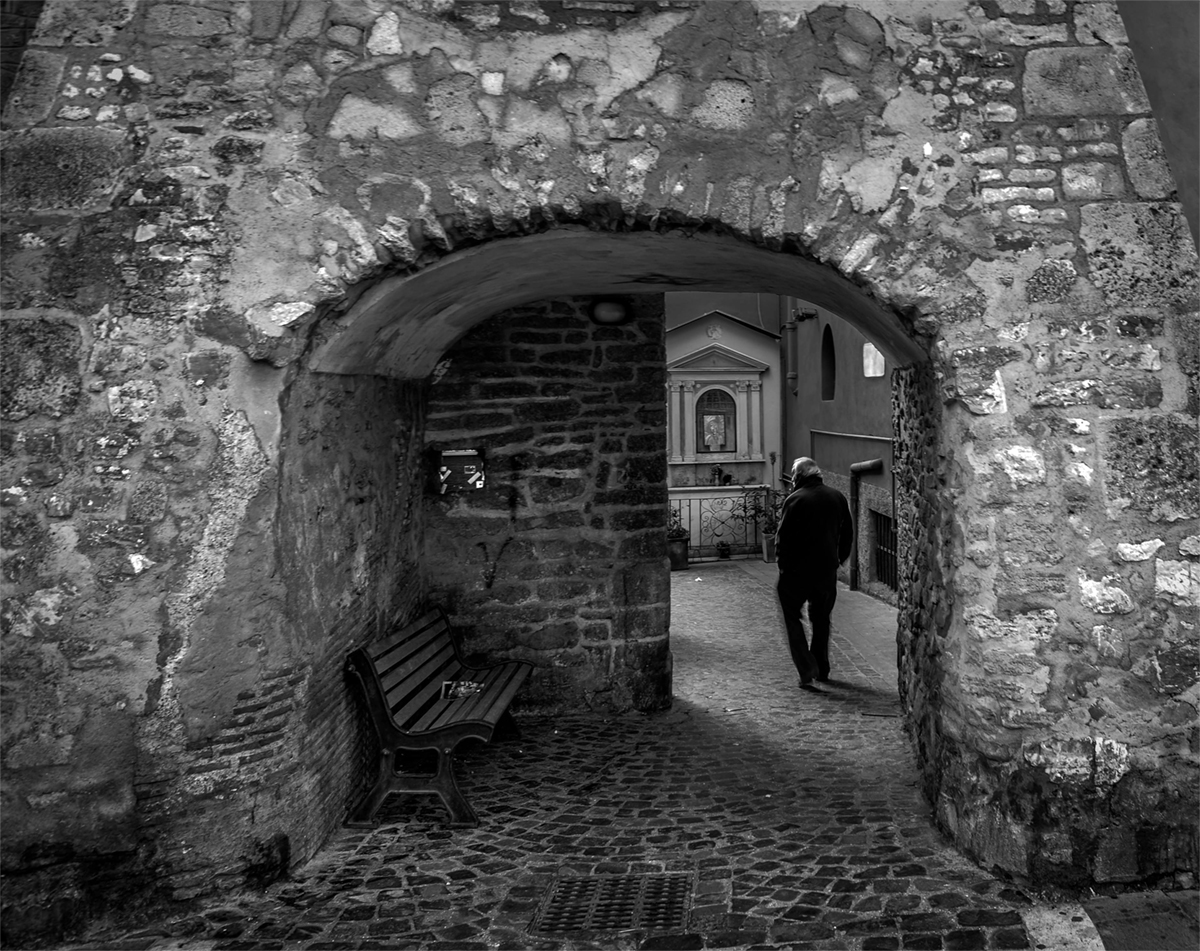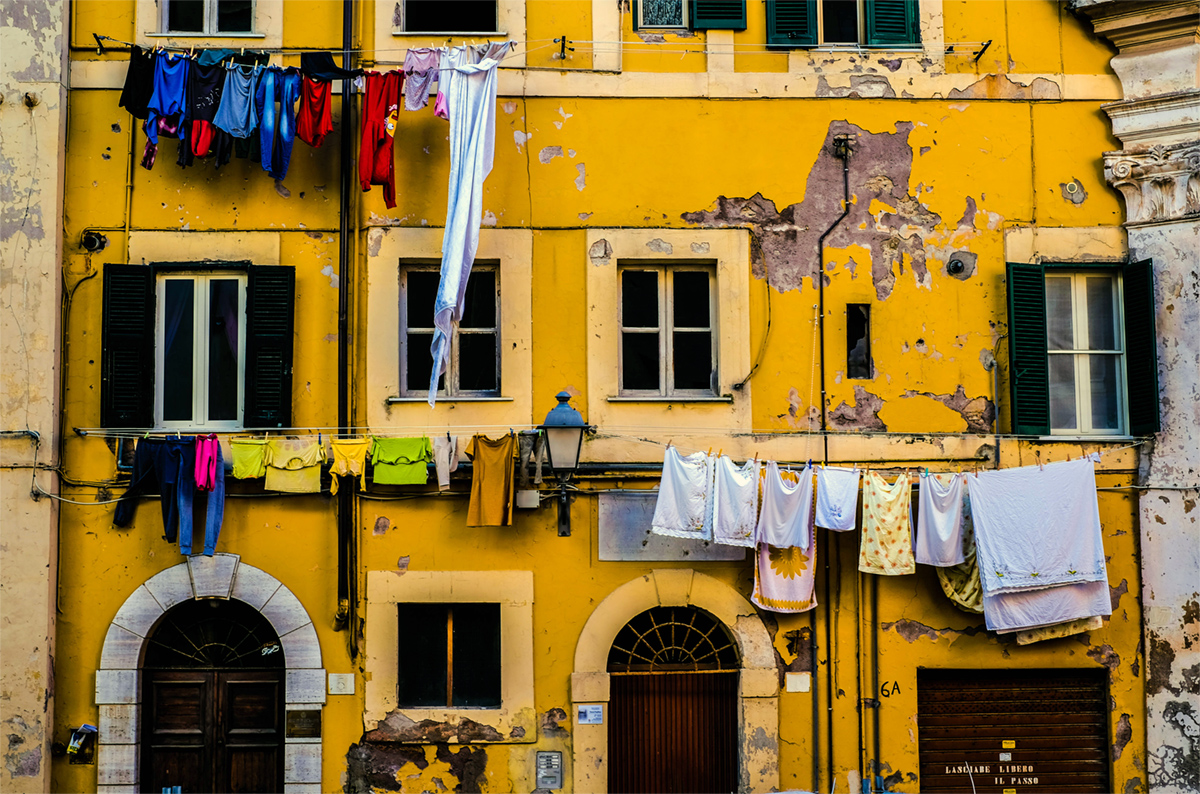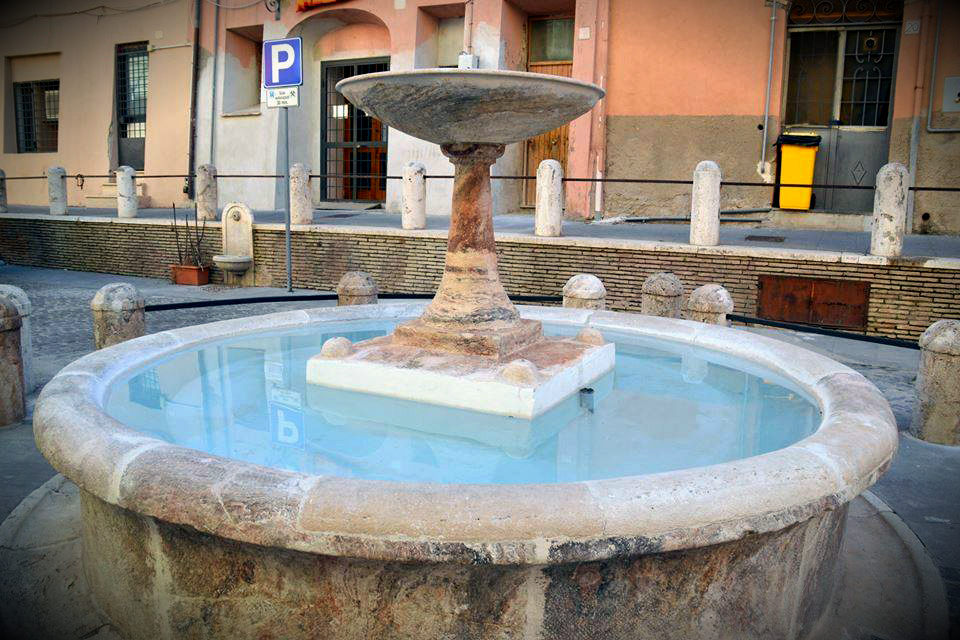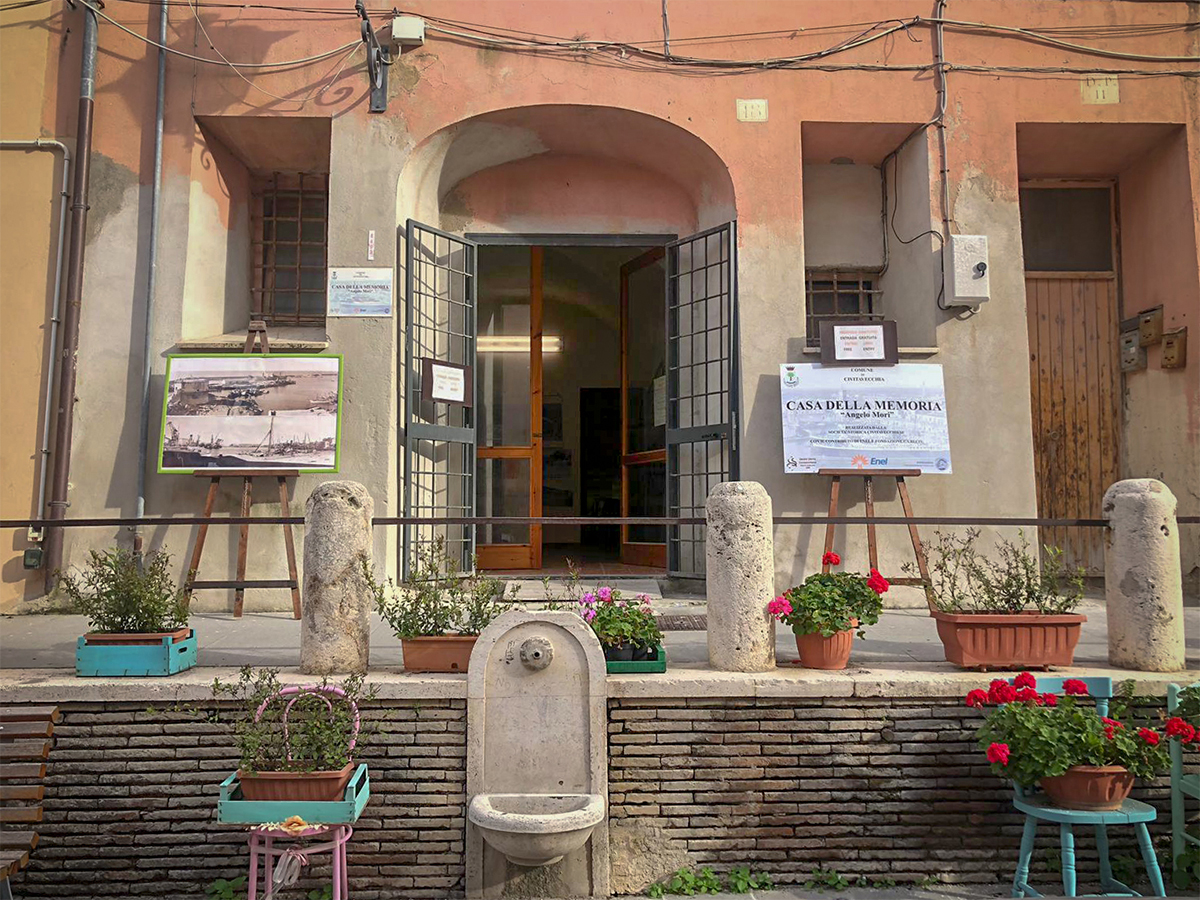Discover Piazza Leandra, the oldest square in town
The oldest square of Civitavecchia is named after the legend of a sailor and houses misterious paintings replica of the Room of Heliodorus in the Vatican.Piazza Leandra (Leandra Square), right in the historic center, is the oldest square in the city, around which extends the characteristic Medieval district. A compulsory stop for who is seeking a suggestive and pleasant walk amidst old alleys and trails from the past.
In the middle of the square, inserted between two old buildings, is a Medieval fountain reactivated in 2012. The small and splendid Church of the Star (1688), one of the oldest churches in Civitavecchia, looks out onto the fountain.

The historic Medieval fountain of Piazza Leandra
A tip for visitors: if you love Medieval history, we recommend you to access the square from the neighboring Piazza Aurelio Saffi (also known as San Giovanni) through the suggestive Archetto passage. The city district is named after this gate of old walls (ninth century). From the gate, you can also reach the Church of Death, absolutely the oldest church in the whole city.

The Archetto passage - Picture by Marco Quartieri
PIAZZA LEANDRA: FROM LEGEND TO HISTORY
A marble stab gives evidence on the origin of the square name. An ancient legend has it that an old sailor named Leandro played a leading role. After the Sarracen invasion (828 AD) the inhabitants of the new city of Leopoli gathered in the country under the shade cast by a big oak tree, to decide whether to go back to the sea side and re-establishing the old Centumcellae or staying on the hill of the new built-up area.
Legend says that exactly when most inhabitants had come out against going back, an old man named Leandro intervened. His eloquence was so convincing that he managed to change the results of the voting, persuading the assambly to vote unanimously to go back to the old city, renamed afterwards Civitas Vetula, Civitavecchia.

Piazza Leandra (Leandra Square) - Picture by Marco Quartieri
Also from this legend comes the interpretation of the city symbol, an old oak tree with the letters O.C. carved on it, following the sailor Leandro's good advice to the inhabitants.
Anyway, even though the legend is particularly suggestive, many have underlined the Medieval custom to name streets after plants. Therefore, Leandro could relate to Oleander, as well as the neighboring streets via dell’Olmo, via Colle dell’Olivo and via di Laura from Laurel.
Besides, Leandro's legend has been refuted by more recent historic evidenc. The Centumcellae founded by Leo IV disappeared definitively only in mid fifteenth century, in conjunction with the discovery of alum in the neighboring hills of Tolfa and the consequent commercial development of the Roman Centumcellae, that around 1072 appeared for the first time as a Rock over the remains of the port, with the name of Civita Vetula, origin of the definitive name of Civitavecchia.

Civitavecchia - the city simbol
To end with, it is said that the letters O.C. in the heraldic emblem of Civitavecchia don't stand for Leandro's ottimo consiglio (excellent advice), but they are the initials of the Roman motto ordo centumcellensis in honour to the Roman origins of Civitavecchia.
THE MISTERY OF THE PAINTINGS OF PIAZZA LEANDRA
In 1972 Tarcisio De Paolis, after buying a house in the historic Leandra Square (Piazza Leandra) realised that under some layers of lime, paint and wall paper, there were some extremely beautiful paintings. It was a replica of the frescos by Raphael of the Room of Heliodorus in the Vatican, commissioned by Pope Julius II between 1511 and 1514.
Thanks to careful restoration works, today most of those paintings have been brought to light and some details reveal mysterious differences with the corrisponding paintings in the Apostolic Palace, making the mystery about their origin even more impenetrable and fascinating.
While waiting for a diagnosis of an investigation of the materials entrusted to the University of Tuscia, the most recent hypothesis suggests that it is not a copy, but a preparatory sketch commissioned by Raphael to a collaborator to show it to Pope Julius II, who used to go every year to Civitavecchia to closely follow construction works of Fort Michelangelo built by Bramante.
On the one hand, supporting this hypothesis is art expert Nicole Dacos, who considers that there aren't any other copies of the famous frescos that Raphael painted in the Vatican. On the other hand, proving it wrong is the fact that in the past it was not common to make life-size sketches.
About who is the author of the paintings, Dacos has no doubts: it would be Emilian xylograph Ugo da Carpi, pupil and collaborator of Parmigianino, who lived in Rome until the terrible sack of 1527.
After all, as journalist Alvaro Ranzoni, who has for years followed up on this case, has recently pointed out:
"impossible not to link the paintings to the presence of Julius II at the same time and space. One hundred meters west, the Pope lived in the old Rock while he went to follow the construction works of the fortress in the port two hundred meters east. This took place while in Rome, Raphael was painting the frescoes in his personal appartament”.
However, it is still a mystery why the paintings where commissioned in a house which was not of the nobility, and even more, inside a room without windows, probably used at the time as a warehouse for wheat.

The Room of Heliodorus in Civitavecchia

The paintings of Piazza Leandra
THE LATEST RESTORATION OF THE FOUNTAIN IN PIAZZA LEANDRA
On 26 June 2015 the latest restoration works to the Fountain in Leandra Square (Piazza Leandra) were concluded. The fountain is gushing again and regaining its old splendour.
The works, by Giulio Venturini and supported by Cassa di Risparmio di Civitavecchia, have really restyled the fountain both from the hydraulic and aesthetic points of view.
The small column that had fallen has been arranged and the basin and the balustrade have been restored. Every missing part has been rebuilt thanks to a mix of hydraulic lime, travertine powder and pumice stone plaster.
To end with, in order to keep this precious historic monument of the city intact, the fountain, after retrieving its original colour, the fountain has been waterproofed with the same produtc used for the restoration of the Barcaccia in Piazza Spagna.
A curiosity about this beautiful fountain: Initially, when it was built it was adorned with four splendid dolphins!

The Fountain in Piazza Leandra restored shortly before the test - Picture by Giovanni Canu
Finally, a stop to absolutely do is the House of Memory, managed by the Civitavecchia Historical Society, one of the most important cultural centers of the city.
Inside the structure there is a permanent photographic exhibition on Civitavecchia, with beautiful images showing the face of the city as it was before the Second World War, and also some of its magnificent monuments which were destroyed after the bombings.
There are also recent photographs of the excavations concerning the Acque Tauri site as well as the various bulletins of the Historical Society. In short, a small mine of knowledge available to anyone. Finally inside, you will be welcomed by Mr. Gigi De Angelis, a real lover of the history of Civitavecchia!

The House of Memory in Leandra Square (Piazza Leandra)
Useful information
Piazza Leandra
- HOW TO GET THERE
Piazza Leandra can be easily reached by foot from the Port of Civitavecchia. If you are close to our Information Point of Largo della Pace you will only need to go towards South in Via XVI Settembre, cross Piazza Luigi Calamatta and turn in Via Triste. At the end, turn left in Via del Piave and you are there.
- TIMETABLES
To visit the paintings you can call +39 0766 28493



 PORT MOBILITY CIVITAVECCHIA
PORT MOBILITY CIVITAVECCHIA


















